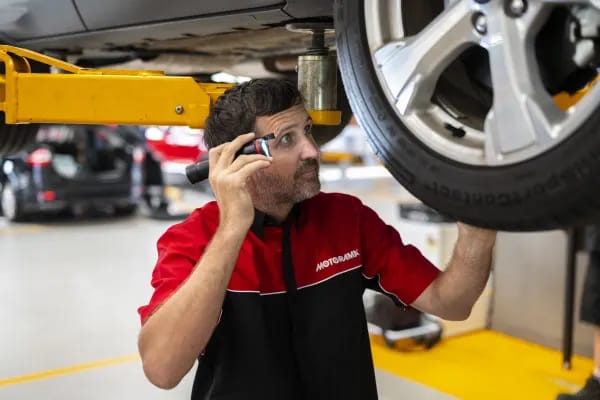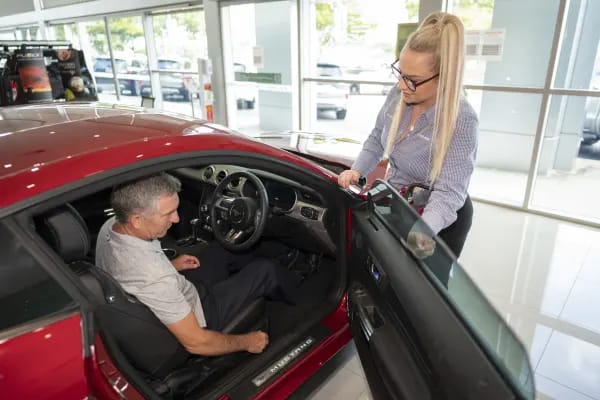
Review: 2016 Ford Mustang
Posted in Vehicle Reviews
Review: 2016 Ford Mustang
The Ford Mustang. No other car could muster such a fevered response from the Australian car buying public that it would start selling on name alone, years before the first one came off the production line.
So, if people are buying the Mustang sight unseen – what’s it actually like on the road?
The first Mustangs arrived fresh off the boat just before Christmas 2015, with demand outstripping supply for at least a year. So, there’s clearly demand, but with only several handfuls found across the country so far – take a step into the black sheep of the Mustang family, the EcoBoost.
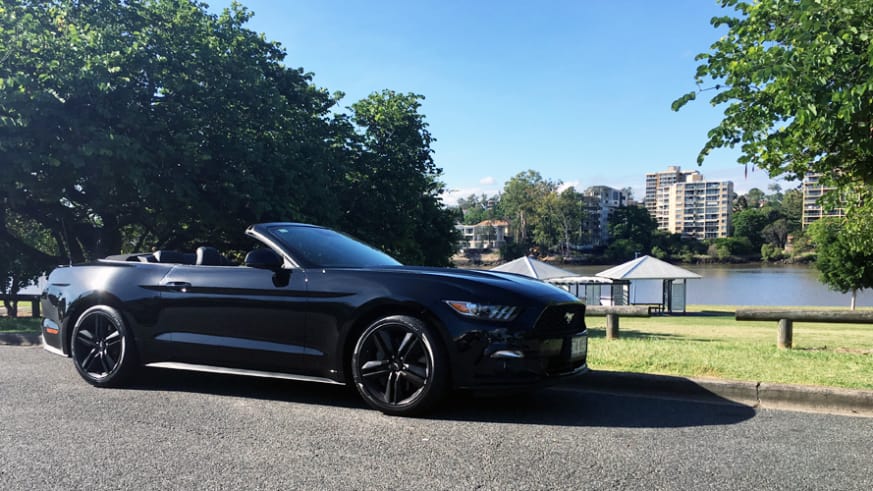
INITIAL IMPRESSION
The Shadow Black Mustang convertible absolutely looks the part if you want a ‘classic’ Mustang in your driveway. Race Red (the standard paint option) is, of course, going to be a popular choice – but the black, as well as the Triple Yellow make for left of field choices that will really help your Mustang to pop, once they start to crowd streets and track days all over Australia. The entire Mustang colour swatches are designed to stand out, but these three will no doubt become the ‘classic’ Mustangs in years to come.

The first mass-produced right-hand drive Mustang also looks the business – it’s all sharp lines and hard edges. But inside, it’s a plush, almost retro interior cabin. Soaked in leather, with retro (but, mercifully, not tacky) switchgears, there’s a blend of new and old in the Mustang.
Both the fastback and convertible Mustangs seat four – though you’d obviously much rather be in the front seats. Little touches, like the Mustang logo puddle lamps, and the hand stamped dash set it further apart from your stock standard performance car.
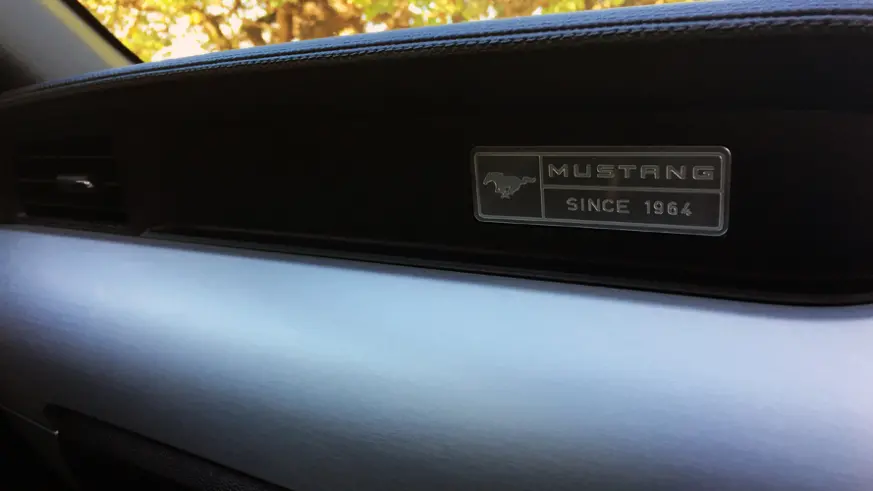
DRIVEABILITY
Well, this is what it’s all about. Some people have seen the EcoBoost Mustang as an affront to what a traditional muscle car is – a four-cylinder with with ‘Eco’ in the title doesn’t inspire confidence for a spirited burst.In reality though, the EcoBoost engine is perfectly fine for the Mustang. The 2.3L is tuned to pump out 233kW of power, but a hefty 432Nm of torque, so it’s not as if they’ve just dropped in a basic unit into one of the most anticipated cars of the year.
This is helped along even more by the six-speed automatic gearbox, which knows when to pick a higher or lower gear, without missing a beat. Even downshifting is rev-matched when braking, so that you’re not left with an awkward pause trying to find the right gear coming out of a corner.
Where a traditional Mustang might’ve been a manual only proposition – gearboxes have come a long way since the the Mustang was first introducted – so the auto is more intuitive at selecting a gear than even the most precise driver. There is something to be said for engaging with a manual transmission, but if you don’t need it – the automatic is just as good.
Not that you can’t smoke someone at the lights, but where the V8 might rip up the road while doing the same job, the EcoBoost engine is as understated when you’re driving into the school drop-off, as it is blasting up a highway.
Stamp your foot down and feel a surge of power, the Mustang catapults forward, up and up and then suddenly you’re over the speed limit. Acceleration is quick, but surefooted – it doesn’t dart all over the road like a lighter car would.
The on-road manners, then, are a highlight; but that’s not to say that the Mustang is all sugar and no spice. Switching modes can firm up the suspension or give you more traction control on slick roads, while the normal mode gives you enough leeway to speed up, while remaining comfortable at low speeds around town. If you want to get right back to basics, you can switch traction control off completely in Track mode – as well as an independent switch to turn off traction if you’re insane and just like sliding through corners.
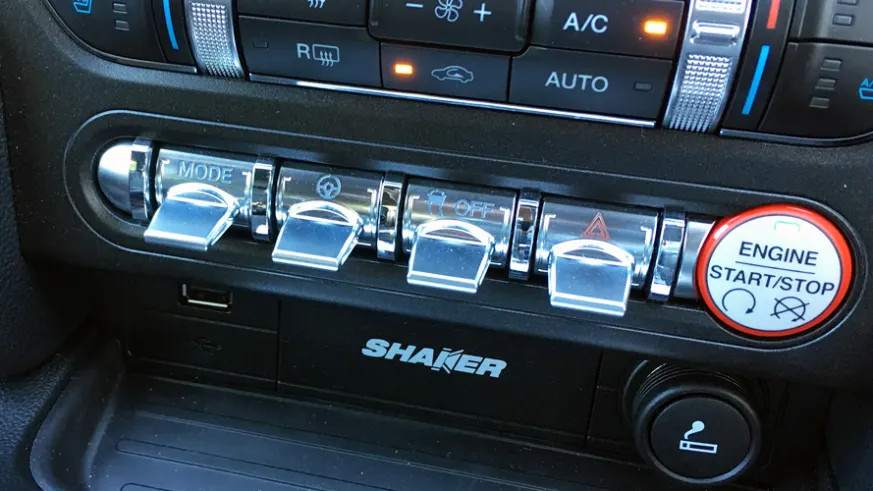
LIVEABILITY
Let’s face it – you’re probably not buying a Mustang if you just need a car to get to bingo at the church hall. Mustangs are bought to be driven: on long, winding stretches of road, or sliding round corners at the track, only briefly the garage long enough to give it a wipe down and refuel it before doing it all over again.
That said if you are going to use your Mustang as your ‘everyday’ car – there’s no point in living with a vehicle with its suspension tuned so harshly that a speed bump sends you to the chiropractor for a spinal adjustment.
On that front, then, the EcoBoost Mustang is perfect. Around town, in normal mode (or even Sports mode), it’s a settled ride, but if you want to play up – the car is right there with you. Driving around is never a chore, every time you start up the Mustang you’ll feel like you’re going to have fun.
The whole tech package has been thrown into the Mustang including power adjustable, heated and cooled front seats, dual zone climate controls, keyless entry with push button start and power windows (individual controls for front passengers and a single driver-controlled switch for the rear-quarter windows.) One omission that you'll notice is the lack of front parking sensors. Because you sit fairly low, the long, sharply dropped nose of the 'Stang can get lost when you're trying to park, and parking sensors could just help stop the sweaty palms when driving your brand new muscle car into a space.
The rear seats are best suited for short trips, if the front passengers want to push their seats back – anybody sitting behind is robbed of their legroom, luckily the seats are deep, but you wouldn’t want to put some rugby players back there for a long drive. Convertible models have slightly more leg and headroom (even before the roof is lifted), but the trade-off is a loss of boot space from the Fastback when the cloth-top is folded into the trunk.
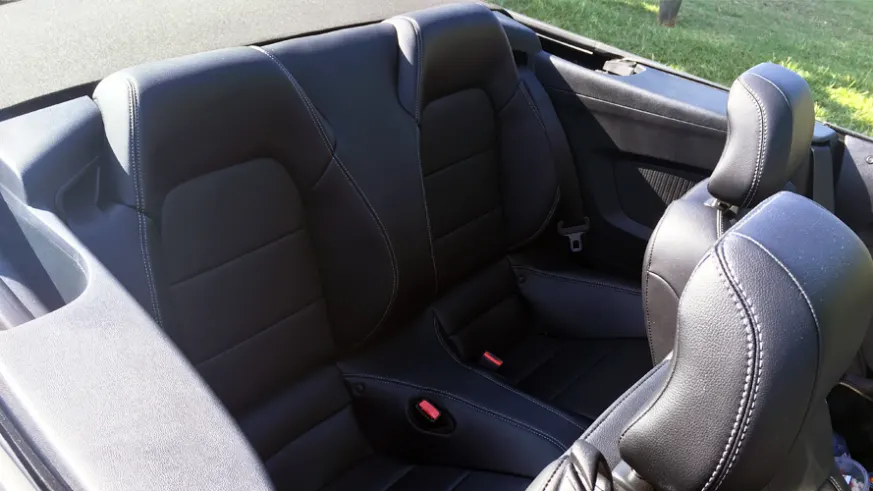
Speaking of the roof, the convertible’s black hood is almost colour-matched to the Shadow Black model, and provides a cool contrasted effect on colours like Competition Orange and the Triple Yellow from the Mustang’s palette. It folds fairly quickly, although you do have to twist a handle to lock and unlock the roof when closed.
Despite the scant centimetres of fabric between you and the open world, noise levels have been kept to a minimum with the Active Noise Cancellation technology found in other Fords, like the Everest.
The SYNC2 system is standard in the Mustang, so connectivity is a breeze, and the multi-information display gives you everything from distance until the fuel tank is empty to your performance on the track, including braking and acceleration times and g-force monitoring.
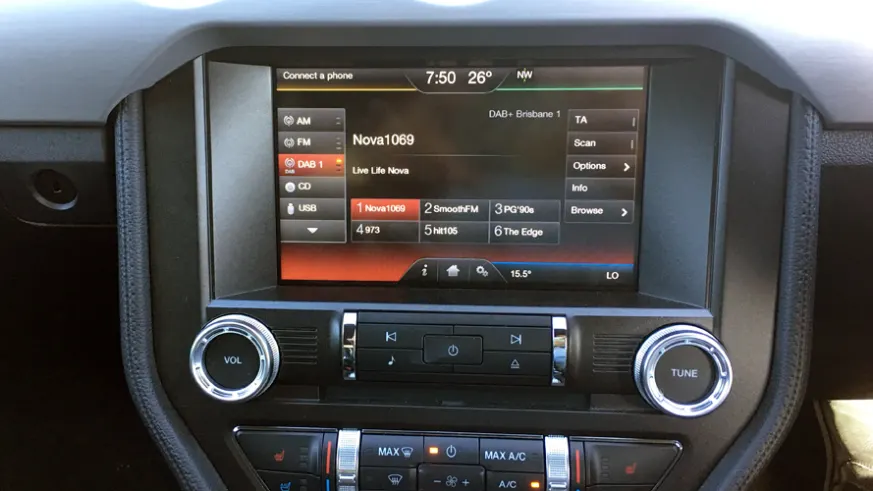
COST
When the right-hand drive Mustang was first announced, people were astonished that they could get into entry-level models for less than $45,000 before on-roads. A lot of early orders were placed by people ready to lock in the tentative pricing.
Pricing for the entry-level EcoBoost manual Fastback models does indeed sit at around $45,990 – but to get into the bulk of the range, you’ll want to add options. Auto-only Convertible models attract a premium, at $55,990 for the first EcoBoost model and the coveted Mustang GT range starts from $57,490 for the V8 Fastback reaching $66,490 to put a V8 in the auto-only Convertible.
All prices are recommended retail prices, excluding dealer delivery and on-road costs including registration, stamp duty or any applicable taxes. Premium paint is available at an additional cost, while options such as a black painted roof, ‘Over-the-top’ Racing Stripes and special edition GT alloy wheels are available as cost options as well.
However, even if you put a bag of cash on the dealer’s desk today, you’ll still have to wait – all 4000 models allocated to Australian dealers have been sold for 2016, with the next Mustang’s available to the public in 2017.
When you do eventually get a Mustang, Ford’s Service Price Promise covers the Pony car for its driveable life. Services are capped at around $300 for the 2.3L EcoBoost models and $290 for the 5.0L V8s, with additional maintenance items able to be added on for a set price. Services are scheduled every 15,000km or twelve months, major services are due every 45,000km or 3 years and come in at around $360 for the EcoBoost and $345 for the GT V8.
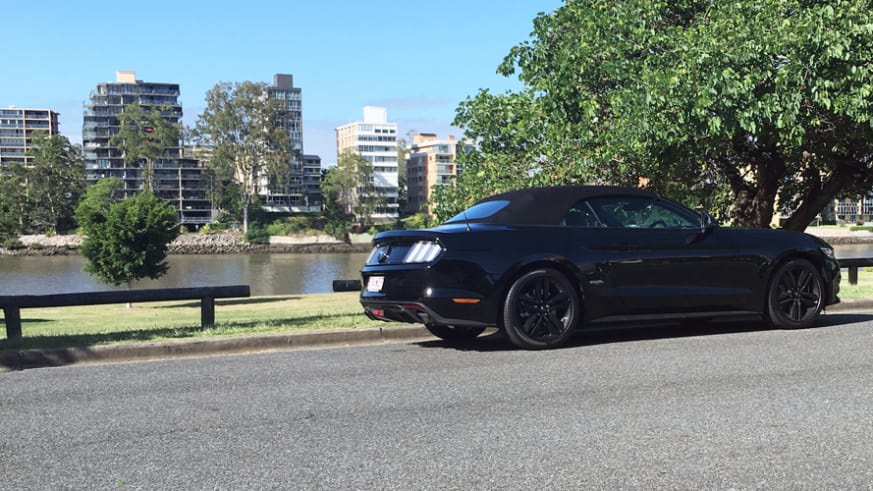
CONCLUSION
The Mustang is everything traditional Australian car culture worships: a rear-wheel drive muscle car, preferably with a highly tuned V8 jammed under the hood. These were easy to sell in the days of cheap petrol and uncomplicated repairs, but as fuel prices went up and technology in cars became more difficult to work on, even the most passionate rev-head couldn’t justify having a big, brash machine that could drive past anything except a petrol station. So they became increasingly rare, relegated to weekend drives and track days.
The new Mustang, though, can be used for driving to work, going out for dinner after as well as sprinting around a track when you get the chance to really test its limits.
To call it a throwback would be wrong, people forget that old muscle cars weren’t particularly comfortable or easy to live with – they were focused on performance above all else, not safety or efficiency. The new Mustang takes what made its forebears excellent, but balances its performance with updated sensibilities and technology to keep your
Ford expects the bulk of orders to be the V8 fastback model, but both the 4-cylinder EcoBoost and the convertible model provide worthy alternatives for those looking to stamp their own personality in the iconic muscle car.
You have to test drive the Mustang to appreciate it. People are clearly excited for the first factory-produced right-hand drive models, and with good reason. After nearly five decades creating a car that has been lusted over and adorned on posters by generations of rev-heads, Australia finally gets a taste of the latest Mustang that borrows from the wealth of engineering experience and benefits from smart technology developments introduced in the years since the first Blue Oval muscle car took to the road.
To test it for yourself, and to place your order, speak to the team at Motorama Ford and get into the all-new Mustang for yourself.
SEE ALSO…
Holden Commodore [SS-V Redline]
HSV GTS

